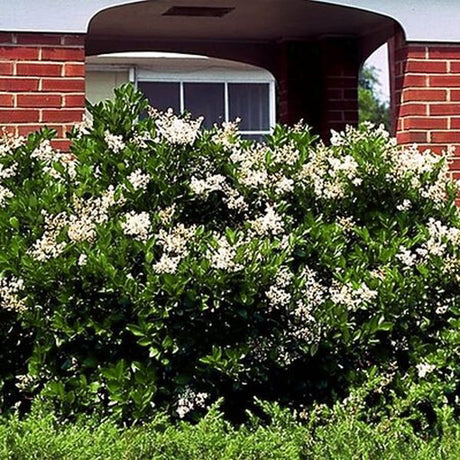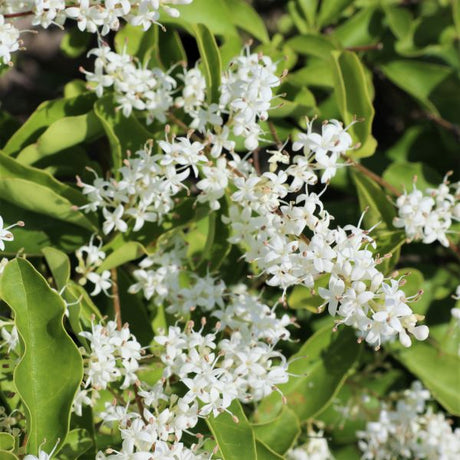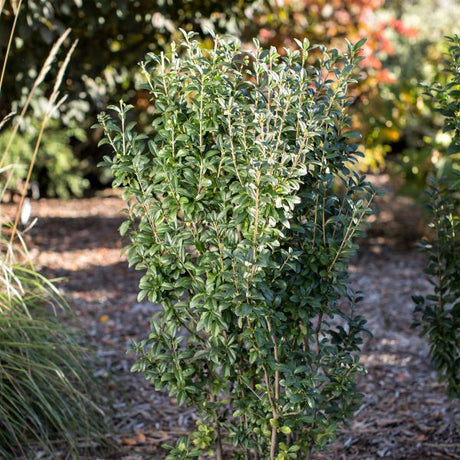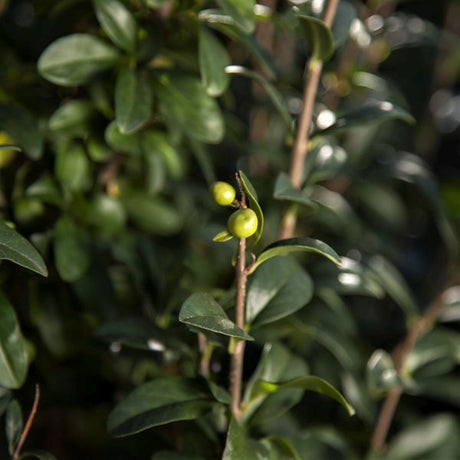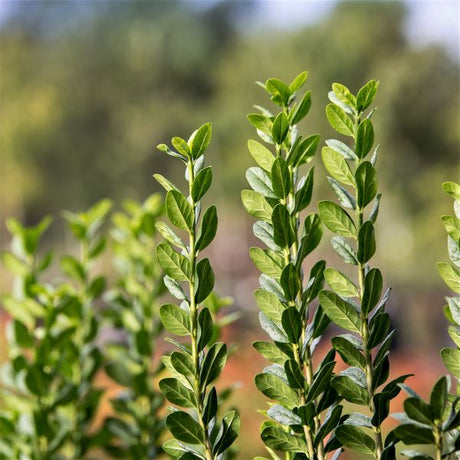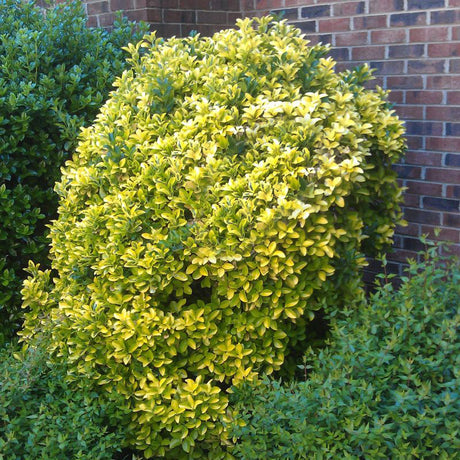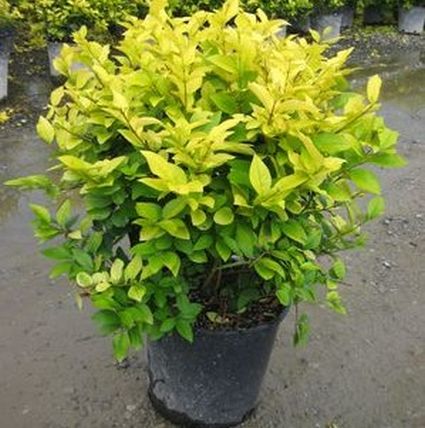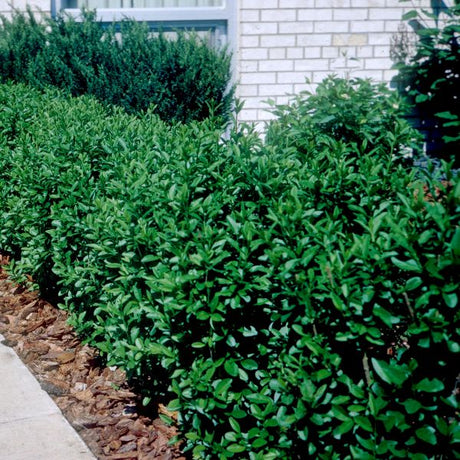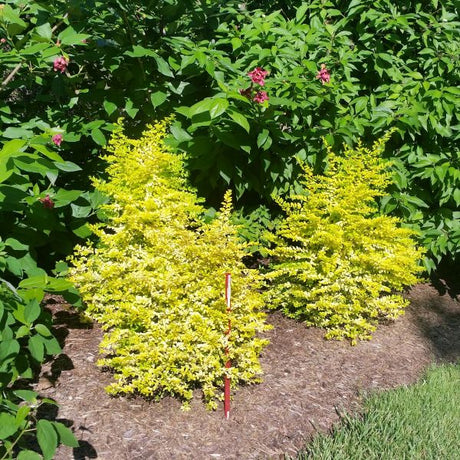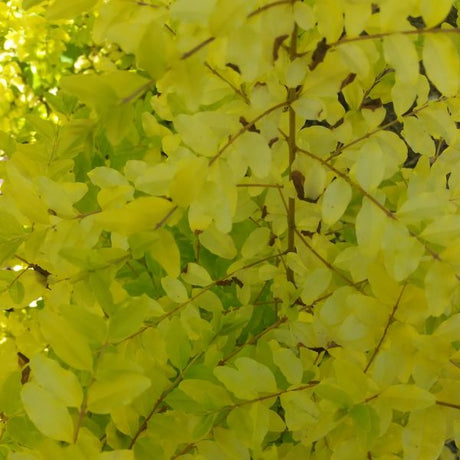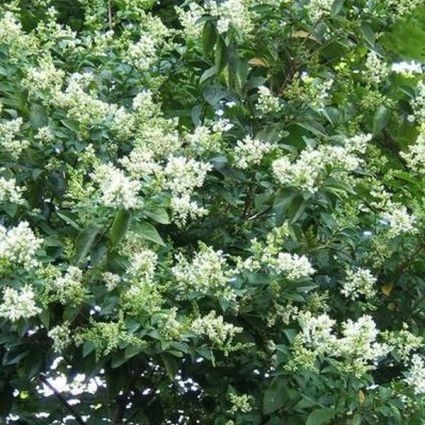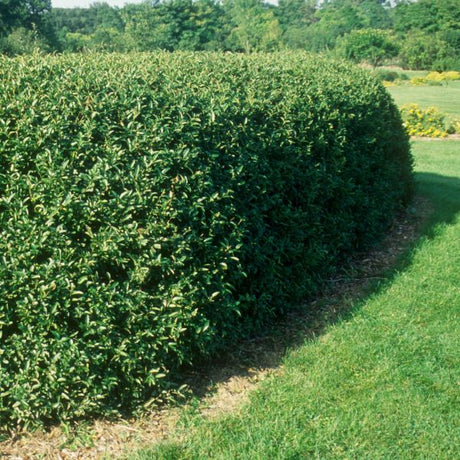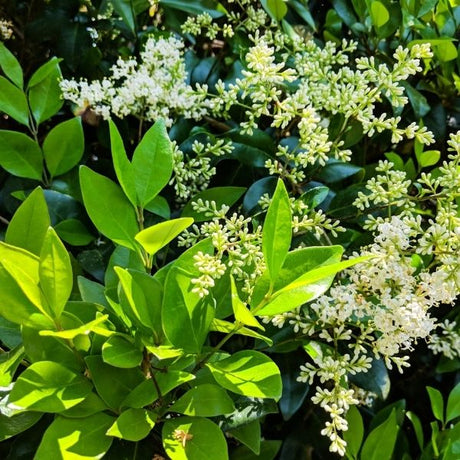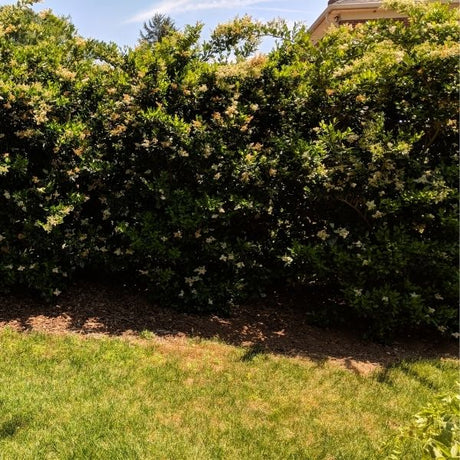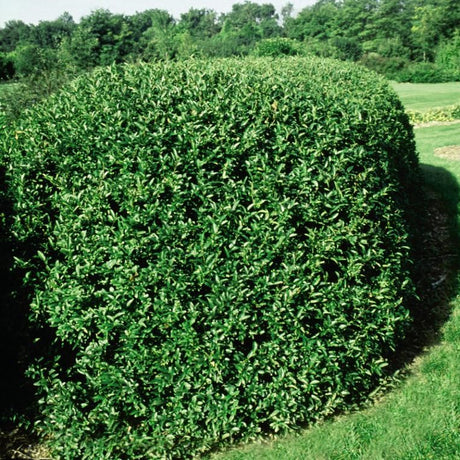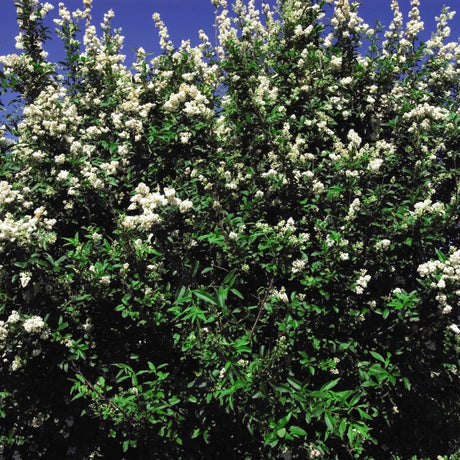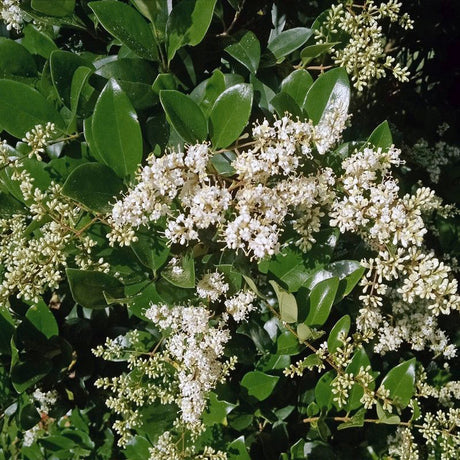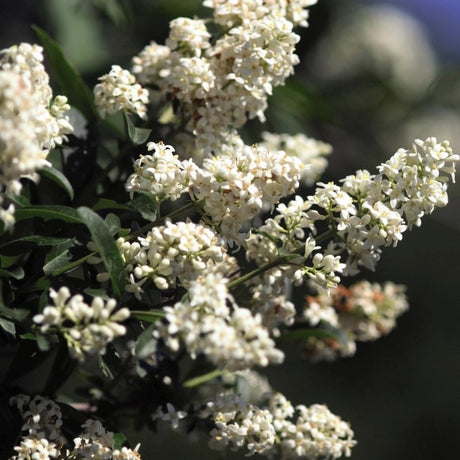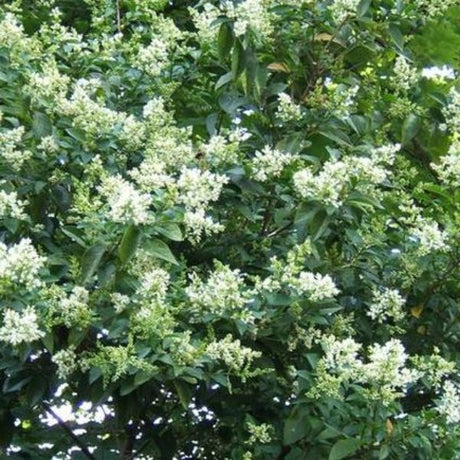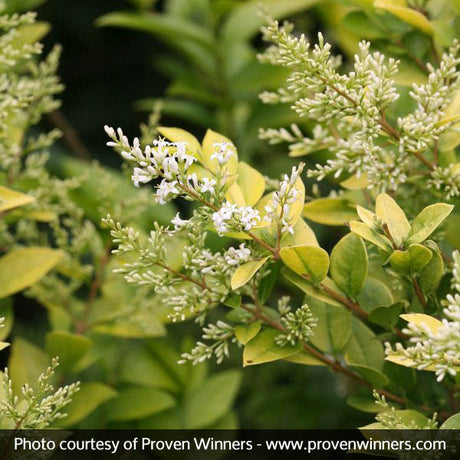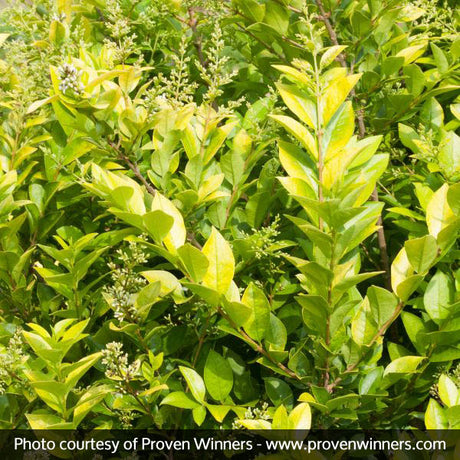- Sold outUp to 16% offRegular price From $3954Unit price /Unavailable
- New arrivalRegular price $6897Unit price /Unavailable
- Regular price $5430Unit price /Unavailable
- Sold outUp to 13% offSale price From $4923 Regular price $5389Unit price /Unavailable
- Sold outRegular price $7962Unit price /Unavailable
- Sold outRegular price From $6954Unit price /Unavailable
- Sold outRegular price From $6959Unit price /Unavailable
- Regular price From $6969Unit price /Unavailable
- Sold out
Privet Hedge Varieties at Nature Hills Nursery
Privet hedges bring a timeless, elegant look to any property. These hardy, adaptable, and fast-growing shrubs create lush green walls that both define and enhance your landscape. Explore our wide selection of Privet varieties to find the perfect fit for your yard or garden.
What Is a Privet Hedge?
 The name “Privet” dates back to the first century, recorded by Roman author and naturalist Pliny the Elder. Native to Europe, Northern Africa, and Central Asia, Privet shrubs have long been valued for both beauty and usefulness. Some species are even used in herbal medicine and flower arrangements.
The name “Privet” dates back to the first century, recorded by Roman author and naturalist Pliny the Elder. Native to Europe, Northern Africa, and Central Asia, Privet shrubs have long been valued for both beauty and usefulness. Some species are even used in herbal medicine and flower arrangements.
During World War II in Britain, Privet hedges gained popularity as ornamental living fences when iron gates and railings were repurposed for the war effort. Today, these shrubs remain one of the most beloved choices for living boundaries.
Ligustrum shrubs are ideal for hedges thanks to their fine texture and dense branching. They respond well to shearing for a crisp formal look or can be left in a natural form, producing bird-friendly berries in fall.
- Beautiful backdrops to flower beds and garden borders
- Reliable privacy hedges and screening plants
- Low edging for pathways or garden filler
- Mass plantings for erosion control
- Striking single specimens or groupings
- Sheared into formal hedges or trained as topiary accents
Ligustrum Shrub Varieties
At Nature Hills, you’ll find easy-care Privet hedges that thrive in USDA growing zones 4 through 9.
- Amur North River Privet – America’s most popular hedge shrub. Fragrant white blooms in spring, excellent cold hardiness, and adaptable to full sun or partial shade.
- Sunshine Ligustrum – Brilliant golden-yellow foliage that stays bright all year, even in winter.
- California Privet Hedge – Glossy green leaves with golden undersides, highly scented summer blooms, and flowers that attract beneficial pollinators.
- Nantucket Privet – Stunning clusters of white blossoms add elegance and seasonal beauty.
- First Editions® Straight Talk® Privet – A unique columnar form, perfect for narrow hedges and smaller spaces.
Plant your Privet hedge in full sun or partial shade in well-drained soil. Avoid soggy areas, mulch thoroughly, and water regularly during the first year to establish strong roots. For shaping and seasonal tips, see our Privet pruning guide.
Why Buy Privet Hedges from Nature Hills Nursery?
Buying plants online is easy and safe with Nature Hills. We back every order with our Product Guarantee, so you receive only the highest-quality shrubs shipped with care.
Our partnership with Plant Sentry™ ensures full compliance with all state and federal regulations, protecting your landscape investment. Join thousands of satisfied gardeners who trust us for healthy, thriving plants.
Order your Privet hedge today and enjoy the beauty, privacy, and versatility these shrubs bring to your outdoor space.
FAQ's for Buying Privet Bushes Online
What Is a Privet Hedge and Why Is It So Popular?
What Is a Privet Hedge and Why Is It So Popular?
A Privet hedge is a classic choice for creating elegant, lush, and living boundaries around your property! Native to Europe, Northern Africa, and Central Asia, Privet shrubs like the Amur North River Privet and California Privet have been trusted for centuries for their adaptability, dense growth, and fast establishment. Whether you crave a stately formal hedge or a more natural, bird-friendly screen, Privet brings timeless charm and hardy reliability to landscapes of every size. It’s old-school luxury with new-age practicality!
How Fast Do Privet Hedges Grow?
How Fast Do Privet Hedges Grow?
Privet hedges are known for being fast growers, often adding 12 to 24 inches of new growth each season with the right conditions! This speedy growth makes them a favorite for gardeners who want quick privacy or a green backdrop without waiting years. Especially the Amur North River Privet and First Editions® Straight Talk® Privet shoot up like green rockets, giving you full, thick coverage before you know it. If you're in a hurry to beautify your yard, Privet hedges are your ticket to instant gratification.
How Do You Care for a Privet Hedge?
How Do You Care for a Privet Hedge?
Caring for a Privet hedge is simple and beginner-friendly! Plant your shrubs in full sun or partial shade with well-draining soil, mulch well, and water regularly during the first growing season. Once established, these hardy hedges become drought-tolerant and low-maintenance. Regular shearing keeps them tidy if you prefer a formal look, or you can let them grow naturally for a more relaxed, bird-friendly vibe. Plus, a little early spring pruning keeps your Privet looking lush and lively year after year!
Are Privet Hedges Good for Privacy?
Are Privet Hedges Good for Privacy?
Absolutely! Privet hedges are famous for their ability to create dense, living privacy screens that block noise, wind, and prying eyes. Thanks to their fast growth and lush branching, varieties like California Privet and Nantucket Privet knit together quickly to form a beautiful green wall. Whether you're aiming for a private backyard oasis or a charming garden backdrop, Privet makes sure your business stays your own—with a whole lot of botanical beauty to boot.
Why Should I Choose Nature Hills Nursery for My Privet Hedge?
Why Should I Choose Nature Hills Nursery for My Privet Hedge?
When you order your Privet hedge from Nature Hills Nursery, you’re getting more than just gorgeous plants—you’re getting peace of mind! Our shrubs are top-quality, shipped safely, and grown with expert care. Plus, our Plant Sentry™ certification ensures that your Privet arrives healthy and compliant with all local and federal regulations. Thousands of happy customers trust us to help them build their dream landscapes, one shrub at a time. Let’s make your garden goals a beautiful reality!

